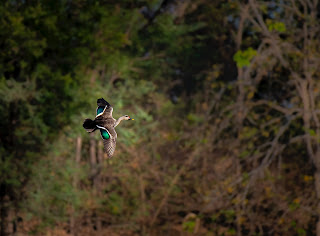“What is that? Check the field guide!”
It’s a not-uncommon problem – you’re on a walk somewhere in the outdoors, and you come across something intriguing. Could be a bird, a tree, or a flower, but you don’t know what it is. That’s where a field guide comes to the rescue!
While the first thing that usually comes to mind when you hear “field guide” is likely to be a Peterson’s (first published in 1934) or Audubon paperback, the guides actually appeared in the late 1890s so folks could ID birds from a distance, as opposed to “in-hand” (much identification at the time was done after the bird had been killed via shotgun). The modern version of field guides was pioneered by Roger Tory Peterson, adding pointers to identifying characteristics for particular birds, as well as how they look in differing plumage (such as immatures, or seasonal variations).
The plethora of field guides today share two common elements: color illustrations or photos; and information about the subject, such as size, distinguishing characteristics, range (where they can be found), and behavior (for animals). The major difference between guides is layout. Are things organized by appearance, or by name (and is that the common, or scientific name?). Frequently, you’ll find illustrations on one page, and information on the opposing page. Audubon guides take a different approach – color pictures in the first half, grouped by a common feature. For example, the Audubon bird guide will have owls, ducks and similar birds together; in their North American trees guide, leaves and fruits and flower colors provide the categories. Those color photos have simple captions: name, size, and page number for the further details, which take up the second half of the guide.
So, now you’re planning for the next walk in the park - time to pick up a guide and go! But don’t just grab the first one you see (unless that’s all there is). Stop and see how it’s organized, look at the general layout and see which one works best for you. The sidebar sonograms of bird calls in the Golden Guide might make identification easier. Or perhaps the thumb cut-outs along the pages of the National Geographic Guide will let you jump to the different groupings much faster.
Also consider a guide’s breadth – you can likely pass up a guide encompassing all of North America if there’s one for the eastern US, or even simply New Jersey. But this leads us to the old issue of portability. Years ago, you would have to choose which guide or guides to bring along, keeping in mind size, weight, etc. It would be great to have a guide for every contingency (Birds! Trees! Butterflies! Mushrooms!) but, physically, it would be a bit burdensome. Now, access to all via eBooks means you could conceivably bring every guide along for the trip!
Identification is also possible via apps. Take a picture of the flower or mushroom and compare it to a database. The Merlin app can listen for bird songs and calls, identifying them in real time (and now you know what to look for, too). Just make sure that you have enough memory for these e-options, the regional pack if necessary, and maybe even a good signal (don’t forget to charge your device, too).
The Mercer County Library System has a wide selection of field guides available, in physical and e-varieties. Now, choose one (or more), get outside, and see what you can find and identify!
- by Dennis B., West Windsor Branch




Comments
Post a Comment